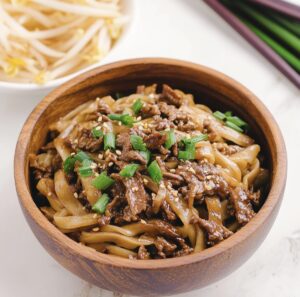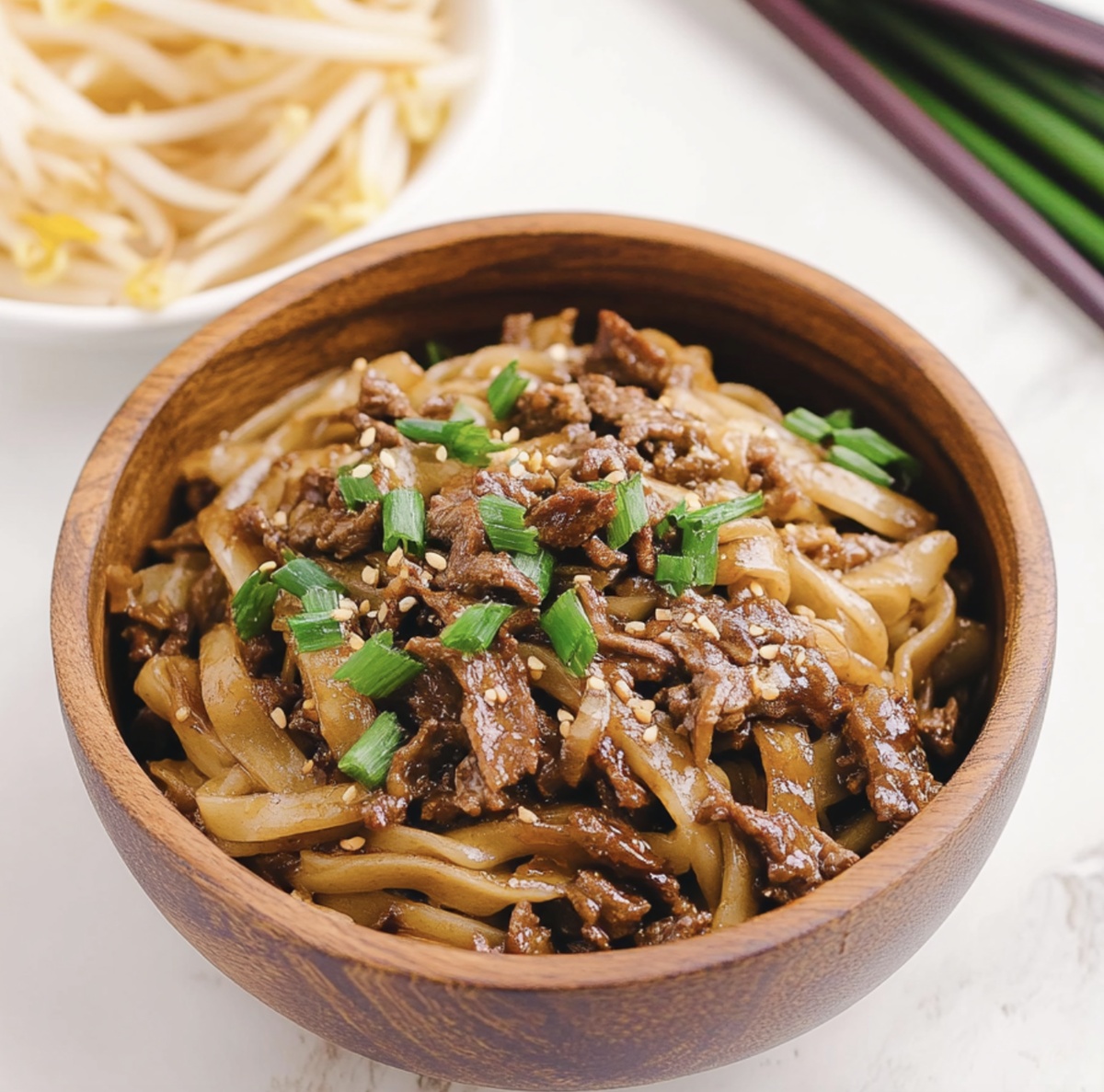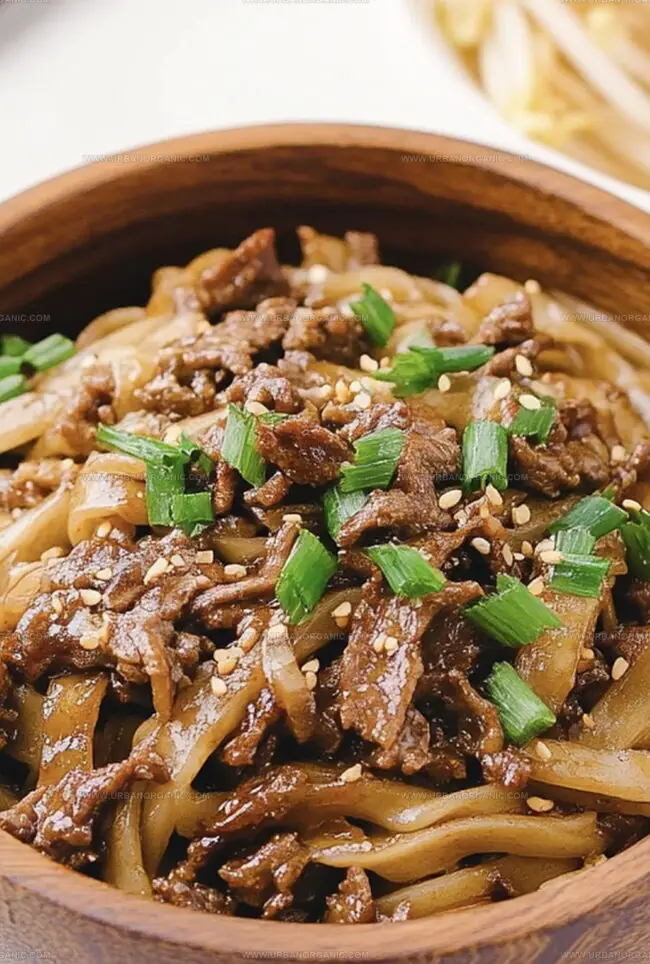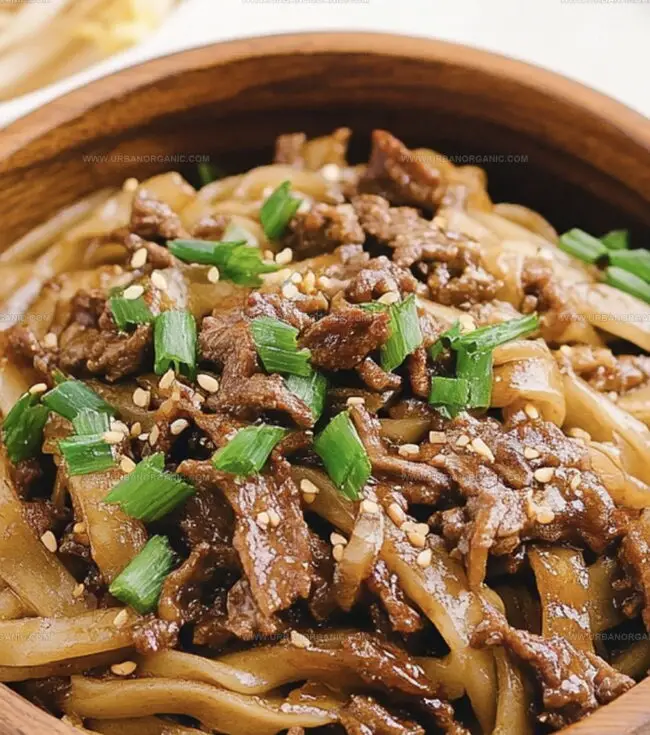Savory Mongolian Beef and Noodle Recipe That’ll Wow Guests
Spicy aromas of mongolian beef and noodle waft through kitchens, promising a culinary adventure that sparks excitement.
Savory strips of meat dance with silky noodles in a symphony of flavors.
Tender beef marinates in rich, complex sauces that tell stories of distant landscapes.
Robust ingredients come together like musical notes creating an extraordinary melody on your plate.
Quick preparation meets intense satisfaction in this delectable dish that connects cultures through taste.
Home cooks find comfort in crafting these bold, vibrant flavors that transport you across continents.
Jump into this recipe and let your kitchen become a gateway to delicious exploration.
Why Mongolian Beef and Noodles Feels So Satisfying
What’s Inside This Sweet-Savory Noodle Bowl
Main Protein:Coating and Thickening Agent:Sauce Components:Noodle Base:Cooking Enhancers:How to Cook Mongolian Beef with Noodles Easily
Step 1: Prepare The Beef
Slice the flank steak into thin, diagonal strips against the meat grain. Toss the strips with cornstarch until each piece is completely and evenly coated. Allow the coated beef to rest at room temperature for 5-10 minutes, which helps the cornstarch adhere and creates a delicate crispy exterior when cooking.
Step 2: Create Flavor Sauce
In a mixing bowl, whisk together:Blend until the sugar dissolves completely and the sauce looks smooth and glossy.
Step 3: Cook Beef
Heat a large wok or heavy skillet over high heat. Add vegetable oil and wait until it shimmers. Carefully place beef strips in a single layer, allowing each piece to sear without overcrowding. Cook for 1-2 minutes per side until edges turn golden brown and crispy.
Step 4: Combine Sauce And Beef
Pour the prepared sauce over the seared beef. Stir quickly to coat every piece, letting the sauce caramelize slightly. This process takes about 2-3 minutes.
Step 5: Prepare Noodles
Boil egg noodles or rice noodles in salted water according to package instructions. Drain and rinse with cold water to stop cooking.
Step 6: Final Assembly
Toss cooked noodles with the saucy beef. Garnish with:Serve immediately while hot and steaming.
Tips for Balanced Sauce and Tender Meat
Storing Mongolian Beef Noodles Correctly
What to Serve with These Noodles
Stir-Fry Add-Ins and Changes to Try
Mongolian Beef Noodle FAQs
The main ingredients include flank steak, cornstarch, soy sauce, brown sugar, garlic, green onions, and egg noodles. These create the perfect balance of sweet and savory flavors in the dish.
Cornstarch helps create a crispy exterior on the beef and helps the sauce stick better. It also helps to tenderize the meat and gives it a nice golden-brown color when stir-fried.
While flank steak works best, you can substitute with sirloin or ribeye. Just ensure the meat is sliced thinly against the grain for maximum tenderness and quick cooking.
The traditional Mongolian Beef is not typically very spicy. However, you can add red pepper flakes or sriracha if you want to increase the heat level to suit your taste preferences.
Print
Mongolian Beef And Noodle Recipe
- Total Time: 25 minutes
- Yield: 4 1x
Description
Savor hearty Mongolian Beef and Noodle magic, where tender strips of marinated beef dance with silky noodles in a rich, tangy sauce. Bold Asian flavors promise a satisfying meal you’ll crave again and again.
Ingredients
Protein:
- 1 lb flank steak or sirloin (thinly sliced against the grain)
Noodles:
- 8 oz lo mein, udon, or spaghetti noodles (cooked according to package instructions)
Sauce and Seasoning:
- ⅓ cup low-sodium soy sauce
- ½ cup beef broth or water
- ¼ cup brown sugar
- ¼ cup cornstarch
- 2 tablespoons vegetable oil
- 1 tablespoon hoisin sauce
- 1 tablespoon rice vinegar
- 1 tablespoon fresh ginger (minced)
- 3 cloves garlic (minced)
- ½ teaspoon red pepper flakes
- ½ cup green onions (sliced)
- 1 tablespoon sesame seeds
Instructions
- Prepare the flank steak by slicing it into delicate, uniform strips, ensuring even thickness for consistent cooking.
- Generously coat the beef strips with cornstarch, gently tossing to create a light, protective layer that will help seal in moisture and create a crispy exterior when cooked.
- Allow the cornstarch-coated beef to rest for several minutes, enabling the coating to adhere and absorb moisture, which will enhance the texture during cooking.
- Heat a large wok or skillet over high heat, creating an intensely hot cooking surface that will quickly sear the meat and lock in its natural flavors.
- Rapidly stir-fry the beef strips, working in small batches to prevent overcrowding, ensuring each piece develops a golden-brown, caramelized crust.
- Remove the seared beef and set aside, then quickly sauté minced garlic and ginger in the same pan, releasing their aromatic essence and creating a flavor foundation.
- Introduce the vibrant sauce mixture, allowing it to simmer and thicken, developing a rich, glossy consistency that will coat the beef and noodles.
- Return the beef to the pan, gently tossing to ensure each strip is evenly glazed with the savory sauce.
- Add pre-cooked noodles to the wok, stirring thoroughly to integrate them with the beef and sauce, creating a harmonious blend of textures and flavors.
- Garnish with fresh green onions and a sprinkle of sesame seeds, adding a final layer of brightness and crunch to the dish.
Notes
- Marinate the beef in soy sauce and a touch of oil to enhance tenderness and lock in deep, rich flavors before coating with cornstarch.
- Choose a high-heat cooking method like wok or cast-iron skillet to achieve that perfect crispy exterior while keeping the meat juicy and tender.
- For a lighter version, swap regular noodles with zucchini noodles or cauliflower rice to reduce carbohydrates and make the dish more keto-friendly.
- Create extra sauce and store separately, allowing diners to control their preferred sauce-to-noodle ratio and prevent soggy noodles during serving.
- Prep Time: 10 minutes
- Cook Time: 15 minutes
- Category: Dinner, Lunch
- Method: Frying
- Cuisine: Mongolian
Nutrition
- Serving Size: 4
- Calories: 460
- Sugar: 8 g
- Sodium: 600 mg
- Fat: 18 g
- Saturated Fat: 3 g
- Unsaturated Fat: 10 g
- Trans Fat: 0 g
- Carbohydrates: 50 g
- Fiber: 2 g
- Protein: 25 g
- Cholesterol: 70 mg




Jessica Martinez
Pastry Chef & Recipe Developer
Expertise
Organic Baking Techniques, Gluten-Free Recipe Development, Southwestern Dessert Specialties, Food Styling and Photography
Education
Santa Fe Community College (SFCC)
Jessica brings the sweet side to Urban Organic with her passion for baking and love for the Southwest. She trained at Santa Fe Community College and has built a career creating beautiful, gluten-free, and organic desserts that feel both nostalgic and new.
She believes baking should be fun, creative, and open to everyone, no matter your diet or skill level. Jessica’s recipes are simple enough to follow, but special enough to remember.